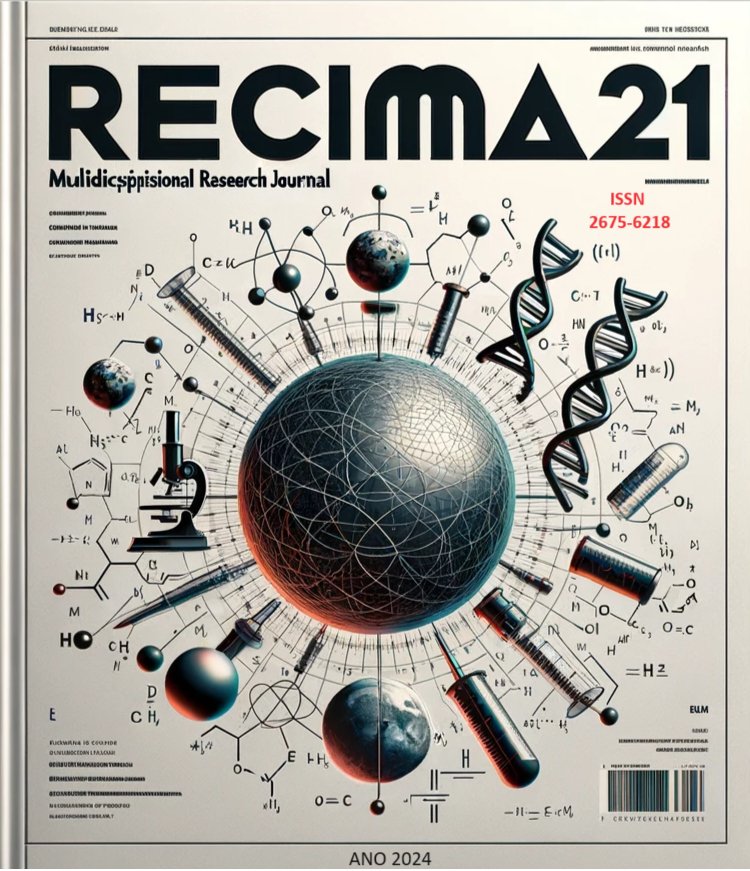EL ENTRENAMIENTO FUNCIONAL DE RESISTENCIA Y SU INFLUENCIA EN LA MEJORA DEL RENDIMIENTO DE LOS CORREDORES
DOI:
https://doi.org/10.47820/recima21.v5i4.5153Palabras clave:
Los trabajos de entrenamiento se resistieron. Rendimiento. Periodización. Rendimiento de carrera. Entrenamiento deportivo.Resumen
El presente trabajo titulado "El entrenamiento funcional de resistencia y su influencia en la ganancia de rendimiento en corredores" tiene como objetivo evaluar, a través de una cuidadosa revisión de la literatura, la influencia del entrenamiento funcional de resistencia en la ganancia de rendimiento de los corredores. La pregunta rectora de este estudio es: "¿Cómo ayuda el entrenamiento funcional de resistencia a mejorar el rendimiento de los corredores y qué estrategias para optimizar este proceso?". En busca de respuestas a esta pregunta, se revisaron varios estudios científicos relacionados con el tema. Los resultados apuntan a la eficacia del entrenamiento funcional de resistencia en la mejora del rendimiento de los corredores. Entre los beneficios destacados se encuentran: aumento de la fuerza muscular, mejor equilibrio, mejora de la coordinación motora y prevención de lesiones. Se espera que este trabajo contribuya a la comprensión de la importancia del entrenamiento funcional de resistencia en la preparación de los corredores. Además, puede servir de base para futuros estudios sobre estrategias eficientes para aumentar el rendimiento deportivo de estos deportistas.
Descargas
Citas
ARAZI, H.; MIRZAEI, B.; NOBARI, H. On the compatibility of endurance and strength training modes of exercise. MOJ Sports Medicine, v. 1, n. 3, p. 00016, 2017.
BALSALOBRE-FERNANDEZ, C.; SANTOS-CONCEJERO, J.; GRIVAS, G. V. Effects of strength training on running economy in highly trained runners: a systematic review with meta-analysis of controlled trials. Journal of Strength and Conditioning Research, v. 30, n. 8, p. 2361-2368, 2016. DOI: https://doi.org/10.1519/JSC.0000000000001316
BALSAMO, S.; TIBANA, R. A.; NASCIMENTO, D. C.; PETRUCCELLI, Z. D.; PRESTES, J.; DE SANTANA, F. S. Exercise order affects the total training volume and the ratings of perceived exertion in response to a super-set resistance training session. International Journal of General Medicine, v. 6, n. 123, 2013. DOI: https://doi.org/10.2147/IJGM.S27377
BERRYMAN, N.; MUJIKA, I.; ARVISAIS, D.; ROUBEIX, M.; BINET, C.; BOSQUET, L. Strength Training for Middle- and Long-Distance Performance: A Meta-Analysis. International Journal of Sports Physiology and Performance, v. 13, n. 1, p. 57–63, 2018. DOI: https://doi.org/10.1123/ijspp.2017-0032
DAMASCENO, M. V.; LIMA-SILVA, A. E.; PASQUA, L. A.; TRICOLI, V.; DUARTE, M.; BISHOP, D. J. et al. Effects of resistance training on neuromuscular characteristics and pacing during 10-km running time trial. European Journal of Applied Physiology, v. 118, n. 7, p. 1513-1522, 2018. DOI: https://doi.org/10.1007/s00421-015-3130-z
GOMES, G. V.; REIS, E. K.; CARVALHO JUNIOR, A. D.; BALSAMO, S. Influence of functional training on the variations of the center of pressure in different surfaces and visual conditions with open and closed eyes for elderly individuals: controlled clinical trial protocol. [S. l.: s. n.], 2015.
GONZÁLEZ-BADILLO, J. J.; SÁNCHEZ-MEDINA, L. Movement velocity as a measure of loading intensity in resistance training. International Journal Sports Medicine, n. 37, p. 03, p. 217-22, 2016.
GREENFIELD, B.; CATLIN, P. A.; COATS, J.; GREEN, E.; MCDONALD, J.; NORTHUP, G. Postural control in women with multiple sclerosis: Effects of task, vision and symptomatic fatigue. Gait & Posture, v. 62, p. 505-511, 2018.
JONES, T. W.; HOWATSON, G.; RUSSELL, M.; FRENCH, D. N. Performance and neuromuscular adaptations following differing ratios of concurrent strength and endurance training. Journal of Strength and Conditioning Research, v. 27, n. 12, p. 3342-3351, 2013. DOI: https://doi.org/10.1519/JSC.0b013e3181b2cf39
KARSTEN, B.; STEVENS, L.; COLPUS, M.; LARUMBE-ZABALA, E.; NACLERIO, F. The effects of sport-specific drills training or high-intensity interval training in young well-trained soccer players. Journal of Strength and Conditioning Research, v. 31, n. 2, p. 368-375, 2016.
LOTURCO, I.; PEREIRA, L. A.; CAL ABAD, C. C.; D'ANGELO, R. A.; FERNANDES, V.; KITAMURA, K.; NAKAMURA, F. Y. Vertical and horizontal jump tests are strongly associated with competitive performance in 100-m dash events. Journal of Strength and Conditioning Research, v. 30, n. 7, p. 1966-1971, 2016. DOI: https://doi.org/10.1519/JSC.0000000000000849
MCMILLIAN, D. J.; MOORE, J. H.; HATLER, B. S.; TAYLOR, D. C. Dynamic vs. static-stretching warm up: the effect on power and agility performance. Journal of Strength and Conditioning Research, v. 20, n. 3, p. 492-499, 2016. DOI: https://doi.org/10.1519/00124278-200608000-00006
PAGE, P.; FRANK, C. C.; LARDNER, R. Assessment and Treatment of Muscle Imbalance: The Janda Approach. Human Kinetics, 2010. DOI: https://doi.org/10.5040/9781718211445
PAOLI, A.; MORO, T.; BIANCO, A. Lift weights to fight overweight. Clinical Physiology and Functional Imaging, v. 37, n. 1, p. 1-6, 2017. DOI: https://doi.org/10.1111/cpf.12136
SILVA, N. L.; OLIVEIRA, R. B.; FLECK, S. J.; LEON, A. C. M. R.; FARINATTI, P. Influence of strength training variables on strength gains in adults over 55 years-old: a meta-analysis of dose-response relationships. Journal of Science and Medicine in Sport, 2016.
Descargas
Publicado
Cómo citar
Número
Sección
Categorías
Licencia
Derechos de autor 2024 RECIMA21 - Revista Científica Multidisciplinar - ISSN 2675-6218

Esta obra está bajo una licencia internacional Creative Commons Atribución 4.0.
Os direitos autorais dos artigos/resenhas/TCCs publicados pertecem à revista RECIMA21, e seguem o padrão Creative Commons (CC BY 4.0), permitindo a cópia ou reprodução, desde que cite a fonte e respeite os direitos dos autores e contenham menção aos mesmos nos créditos. Toda e qualquer obra publicada na revista, seu conteúdo é de responsabilidade dos autores, cabendo a RECIMA21 apenas ser o veículo de divulgação, seguindo os padrões nacionais e internacionais de publicação.













